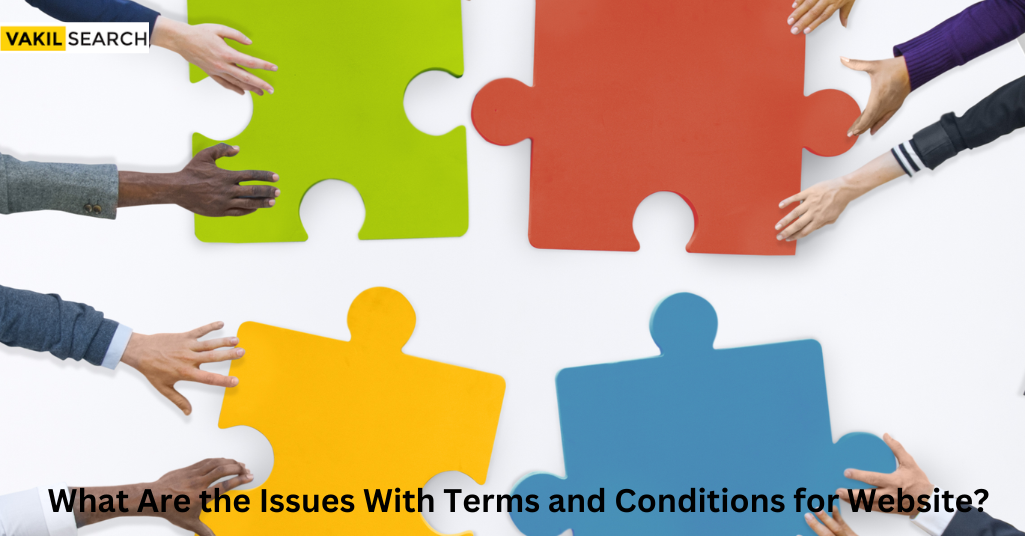Read this blog to understand the common issues with Terms and Conditions for Website and how they can be avoided. It further elaborates on the precautions taken to prevent the same.
Introduction
Often, in the digital wonderment of today’s world, we tend to overlook quite a few of our prerogatives on self and information control that only we can ensure to be followed and safeguarded in the activities we indulge online and, now as the scares have crept in, even offline!
In other words, the onus is on us to try and figure out whether or not we are willingly or sometimes unknowingly leaving way too many traces on the internet, which makes it easier to draw us back by sketching our choices, and data, personal information, likes and dislikes likewise.
How Is Information Collected?
There are multiple ways a website, application or any user-system interface works to collect and store data. The data thus collected is later used to graft personalized content with previously determined likes and dislikes for the user when the site detects the same entries made again.
This makes the accessibility and usability of the site much more agreeable for the user, and the unique content makes them want to engage more and more with it because of the practical relevance and convenience. You can get the Terms and Conditions for Website Resolved Online for any disputes in the Terms and Conditions for Website.
Information can be collected in the following ways:
- If the visits are recurrent, the sites a user visits and the sign-in is more frequent concerning other tabs and websites.
- Through usernames, passwords and account details provided by the user for various sign-ins to different windows
- The “remember me” feature allows the system to collect and store Terms and Conditions for Website and direct an auto-fill every time the user needs to enter similar information.
- Through shopping websites, activity tracing, agreeability with a field solely worked up by an algorithm.
- Recent purchases made by the user are used as a referral to the variety of suggestions or prompts, or searches the site offers to/ or would like to extend or make visible the same.
- More crucial information such as an address, employment details, and travelling details is also collected when an individual tries to access sites for easier navigation or assistance in the form of Terms and Conditions for Website or directions.
- To match the content flash with our interests, websites use ‘cookies’ which track information imparted by the user upon admission to the site, up to certain levels that the users can determine for themselves. Users can always return and change their cookie preference on a website or application. However, it is advisable to do it right at the start and not blindly accept all the terms and conditions and entitlement to the information that the website may claim.
How the Terms and Conditions for Website Works?
With the growing dependence of all ages on social media, its complaint, informative and entertaining services, user-friendly interface, and the biggest win of all its connectivity, we sure can still demarcate how some age groups are savvier than the others. For these age groups, the concern of falling prey to any data transgression is comparatively lesser. Terms and Conditions for Website are therefore So Crucial!
They might consciously look out for privacy breaches and limit the amount of information they leave on the web. On the contrary, the other age groups generally sit somewhat tight.
They do as it is demanded to, partly because of their newly discovered novel indulgence in the digital developments of the world and partly because of the complexities that haven’t dawned upon them yet, of information exchange in data selling.
With growing evidence of data leaks, the need for every person to sign a privacy policy regarding the websites, applications, and databases they’re a part of or actively use, is imperative and of utmost importance. It is also necessary that these policies are self-customisable; people can choose what they allow the algorithms on the internet to know, store, and about them to use and personalize for them. Even the MSA Draft Processing also has the Same Structure that We have to follow.
How and Why is Information Shared or Sold?
Osano is a very prompt website on the internet, which keeps cookies, and data/ information on the web regulated by the laws of GDPR, CCPA etc.
It helps track every third-party usage of information or data through the website, which is allowed to collect and accessed by the user. Though the information isn’t all that daunting, it is unethical to override and infringe privacy by channeling their information to other websites and third-party vendors to provide relevant and tailored information.
Though every website ensures it gets its information-sharing activity consented to by the user, individuals need to be aware of this outside the internet. If a person agrees, it doesn’t become a persistent cookie; it can be easily withdrawn or turned into a temporary cookie. Terms and Conditions for Website settings are for the user and should remain relevant only at the user’s discretion. Some other uses of trackers or cookies are as follows:
- Often websites defend themselves against lawsuits or legal claims or as retribution, justify their transparency with the user, and acquaint them with why it is imperative for business partners or contractors/sub-contractors to follow up with the user data.
- This method of allowing cookies to overthrow image ramifications on the internet, alongside showing up for promotional content, is also one of their most important uses.
- Feedback is a way to show that the websites or applications one interacts with are open to changes and improvement, which is an impressive trait. Besides, valuing the user’s point of view indicates respect for their mental integrity.
- This way, a panoramic semi-accurate survey can be conducted without too many resources, and the information achieved could better match the user’s preference levels.
Significant Issues Faced Over Terms and Conditions for Website
As one delves deeper into the semantics of the terms and conditions of the cookie page on the website, they become more and more aware and confident of all the data harnessing. As new privacy laws are introduced daily, many businesses invite legal trouble through DNT (Do No Trackers) checks. A user may file GDPR (General Data Protection Regulation) complaints (European Union), CalOPPA (California Online Privacy Protection Act) etc. Their strict privacy laws do not allow private information like details of households, property, or employment to be sold further and restrict their ability to tamper.
As it holds, miscommunication and negligence can birth user-website discrepancies too.
- Constructing the website well and with lots of time in hand: It must specifically mention what data shall be assimilated and how the tracking process doesn’t put their information under any security threat.
- The website should elaborate on the process of extricating information and the exact reasons why and how it is going to put the information to use.
- The website should ask for consent if it needs to channel the collected information to a sub-contractor.
- Depending on the area of using the website or the location of the audience it reaches, the privacy policymakers should keep the laws governing the area in mind and state relevant details that follow the law.
- Conspicuous details must be shared if any extra technology like web beacons and pixels ‘experience builders’ (similar to that of cookies) is used.
- An option to not accept these services should be necessarily included, albeit with a warning of experience enhancement or diminution.
- The website privacy policy should avoid lying or twisted language or making data usability sound any different from it.
- The policy should encompass all strict privacy laws, and the site must ensure the kind of jurisdiction it falls under.
- Users must be urged to read the data policies and terms and conditions related to their privacy, which the functioning must assure the website itself.
- It should also offer manual customer support and some Frequently Asked Questions (FAQ) lists for the users’ convenience.
Conclusion:
What makes a website engaging is how well it reads the user interaction with its products and Terms and Conditions for Website. While transferring data may seem completely harmless, data theft is a serious concern. Plenty of websites mint money and also regulate the flow of data. It could reach the hands of unwanted information sources or businesses/ parties/ contractors/ vendors, which might not be well-approved by the user(s).
Suppose things go haywire for the business website, and there are legal consequences for a privacy policy that doesn’t match said standards. In that case, the heavy penalties and persecution are incurred, which is unfortunate for a business that did well. So Contact the experts from Vakilsearch for any advice.
As attractive as the concept of personalized content and tailored-to-taste information is, and accomplishing the thought of a user’s valued mental integrity, games, surveys, trackers, and ready information are all gateways to sequestered information storage depository. Transparency is always appreciated.
Read more:-










